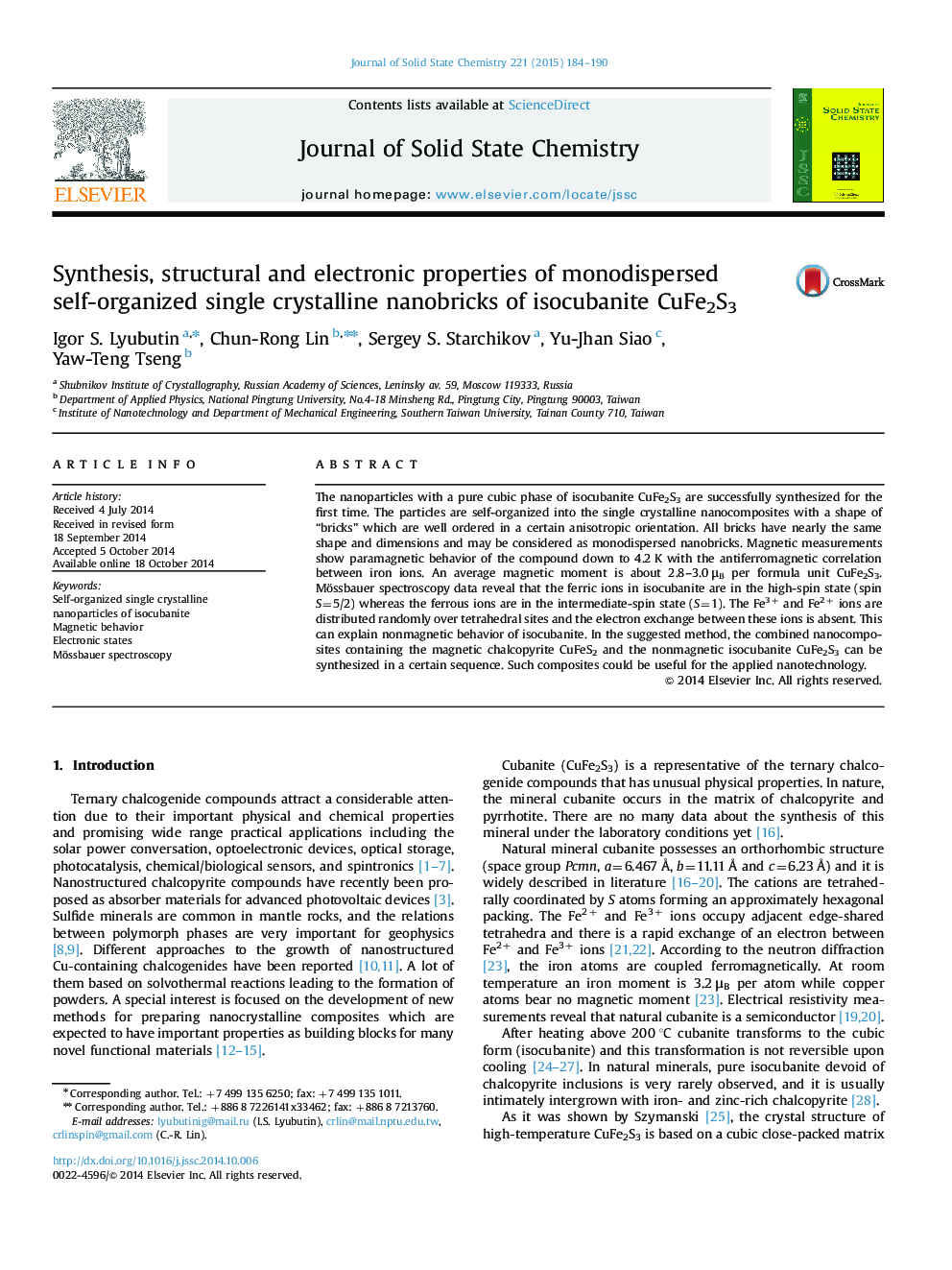| Article ID | Journal | Published Year | Pages | File Type |
|---|---|---|---|---|
| 1329621 | Journal of Solid State Chemistry | 2015 | 7 Pages |
•Self-organized single crystalline “nanobricks” of CuFe2S3 were synthesized.•All bricks are nearly monodispersed and well-ordered in a certain anisotropic orientation.•XRD, HRTEM, magnetic measurements and Mössbauer spectroscopy were used for characterization.•Nanobricks are paramagnetic down to 4.2 K with effective magnetic moment about 3.0 μB per f.u.•Mössbauer spectroscopy data indicate different spin states of Fe2+ and Fe3+ ions.
The nanoparticles with a pure cubic phase of isocubanite CuFe2S3 are successfully synthesized for the first time. The particles are self-organized into the single crystalline nanocomposites with a shape of “bricks” which are well ordered in a certain anisotropic orientation. All bricks have nearly the same shape and dimensions and may be considered as monodispersed nanobricks. Magnetic measurements show paramagnetic behavior of the compound down to 4.2 K with the antiferromagnetic correlation between iron ions. An average magnetic moment is about 2.8–3.0 μB per formula unit CuFe2S3. Mössbauer spectroscopy data reveal that the ferric ions in isocubanite are in the high-spin state (spin S=5/2) whereas the ferrous ions are in the intermediate-spin state (S=1). The Fe3+ and Fe2+ ions are distributed randomly over tetrahedral sites and the electron exchange between these ions is absent. This can explain nonmagnetic behavior of isocubanite. In the suggested method, the combined nanocomposites containing the magnetic chalcopyrite CuFeS2 and the nonmagnetic isocubanite CuFe2S3 can be synthesized in a certain sequence. Such composites could be useful for the applied nanotechnology.
Graphical abstractSelf-organized single crystalline “nanobricks” of isocubanite CuFe2S3 synthesized by a thermal pyrolysis method.Figure optionsDownload full-size imageDownload as PowerPoint slide
